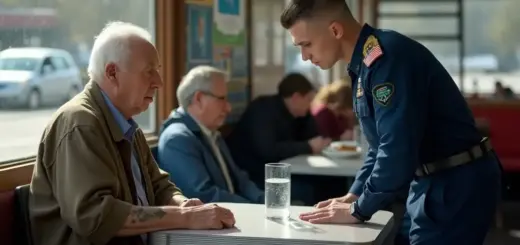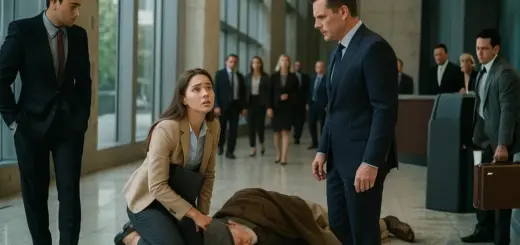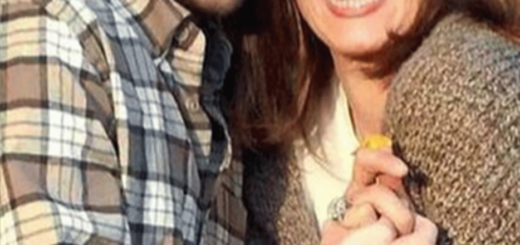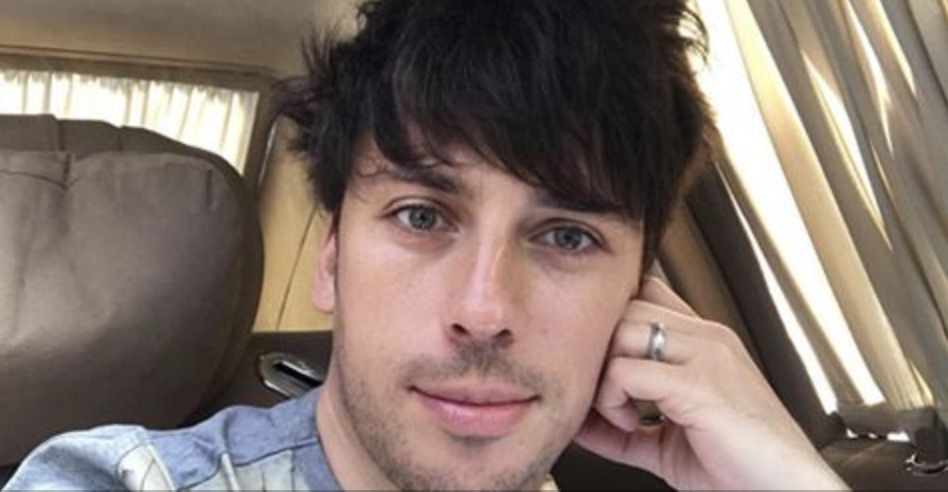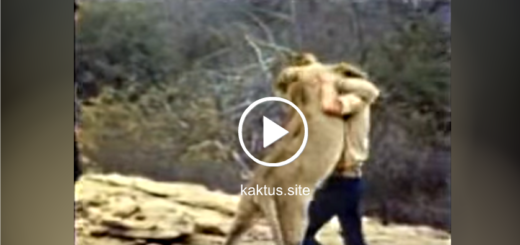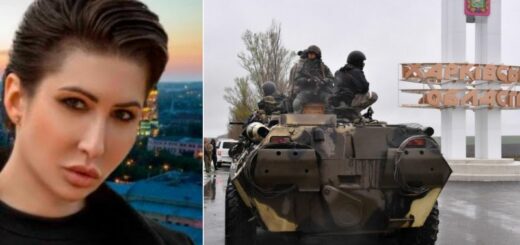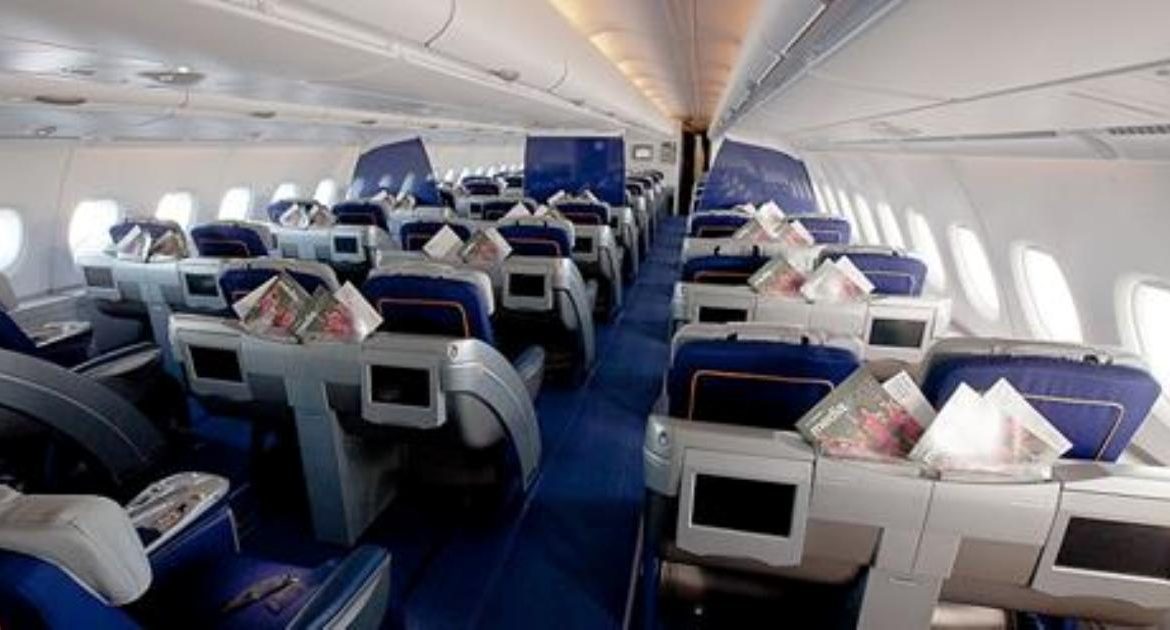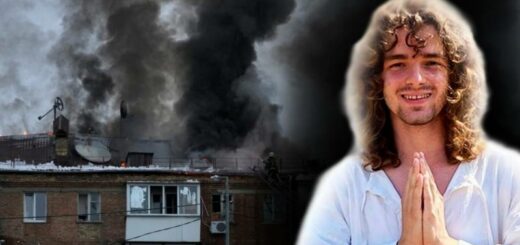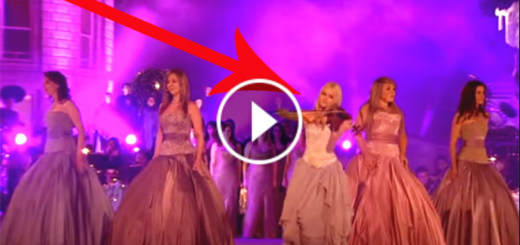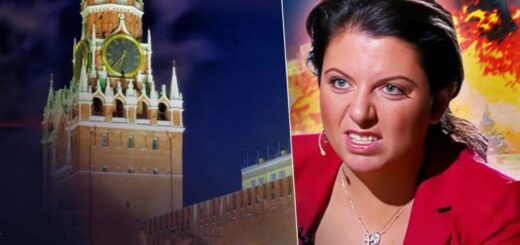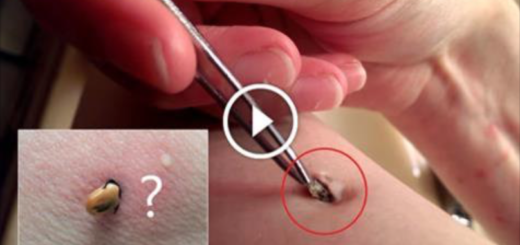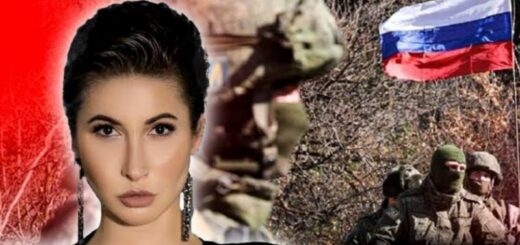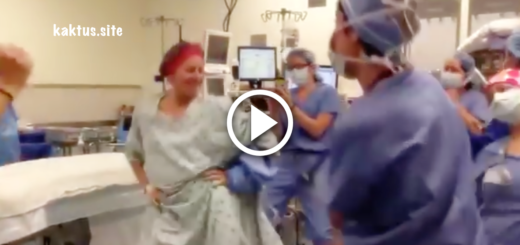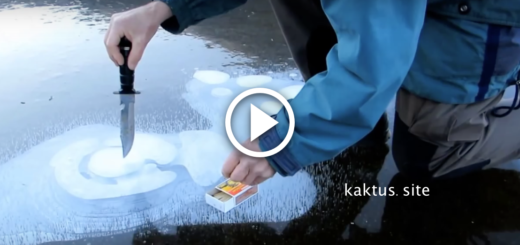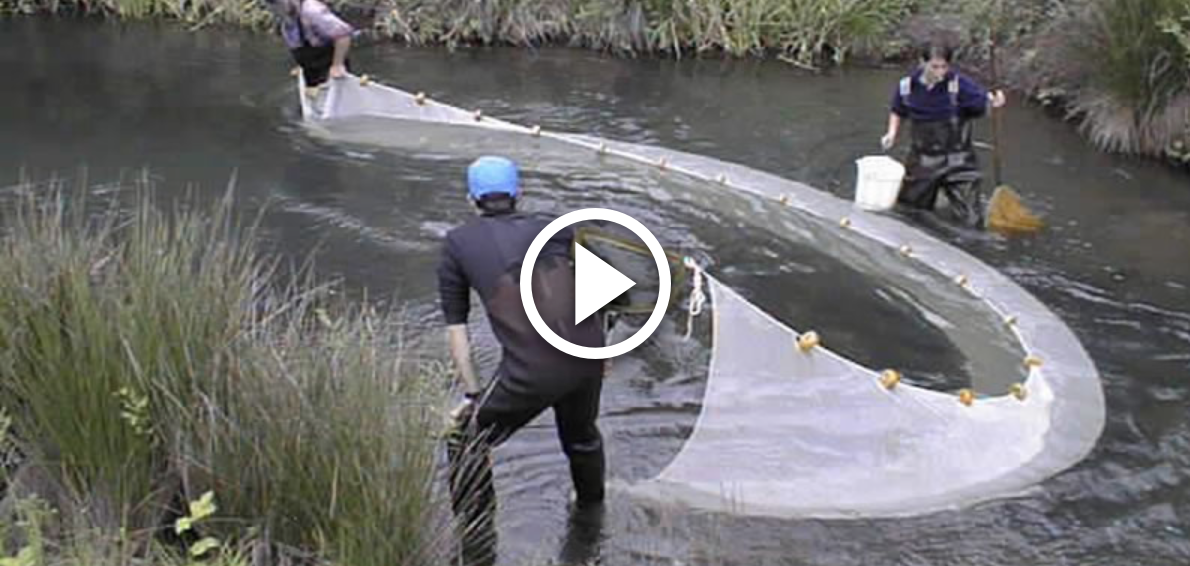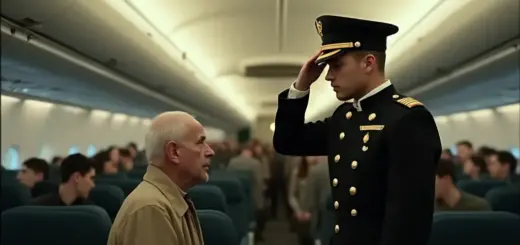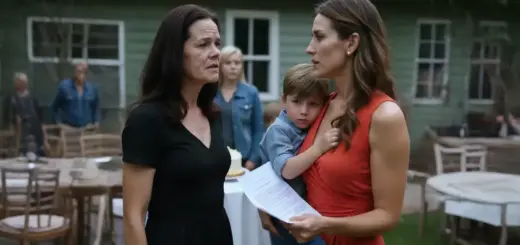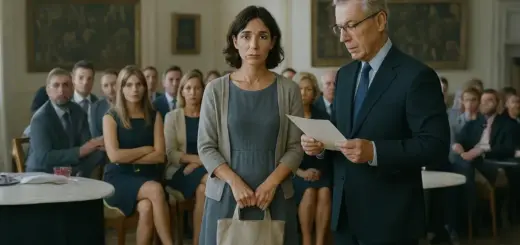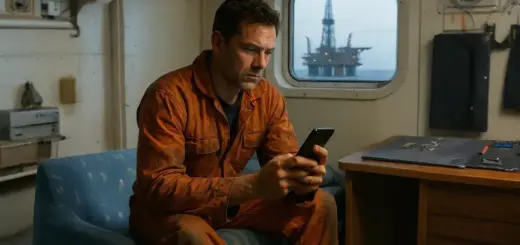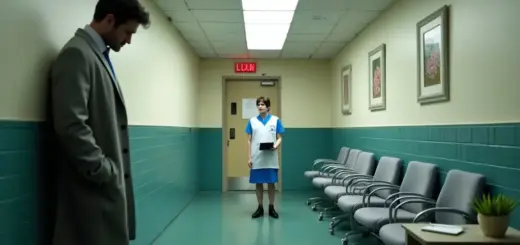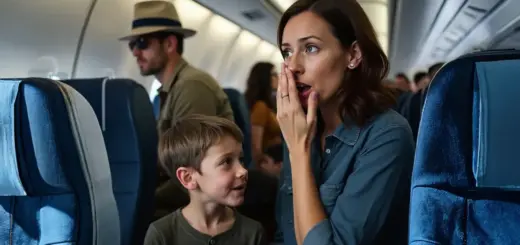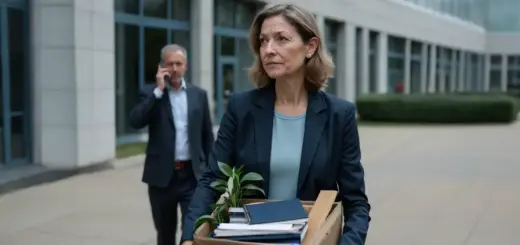«Differential thrust?» Harrison questioned, even as part of his mind recognized the logic. «Your remaining engine can provide both forward thrust and directional control if you modulate the power correctly,» Fallon explained. «Combined with careful rudder inputs, you can essentially fly the aircraft like a large fighter jet with compromised controls. I’ve done it before, just not in a civilian aircraft this size.»
Outside, the English countryside was becoming visibly larger as Flight 847 continued its descent through 18,000 feet. Time was running out. «You’ve actually recovered from this type of failure?» Harrison asked, his desperation finally overcoming his skepticism. «Multiple times in various aircraft types,» Fallon confirmed. «The principles are the same regardless of the aircraft size.»
The radio crackled again. «British Airways 847, be advised you are now through flight level 150 and descending rapidly.» Harrison looked at Fallon, his expression shifting from skepticism to desperate hope. «Can you actually help us regain control of this aircraft?» he asked. «I can try,» she replied confidently. «But I’ll need access to the controls, and you’ll need to trust techniques that aren’t in your standard operating procedures.»
Harrison and Chun exchanged glances. Their aircraft was dying around them, and conventional solutions had failed. «What do you need?» Harrison asked. Fallon moved to the left side of the cockpit, positioning herself where she could reach the throttle controls and trim system. «I need you to maintain rudder pressure while I work the power settings. Chun, I need you to call out altitude and airspeed while monitoring system status.» As she placed her hands on the controls, she felt the familiar sensation of an aircraft in distress. The Boeing 777 was badly damaged, but it wasn’t completely uncontrollable.
Just as Fallon positioned herself at the controls, the cockpit door burst open again. This time it was Captain Reynolds, the British Airways check airman who had been traveling as a passenger. «Harrison, what’s the situation?» Reynolds demanded, his eyes taking in the instrument displays before noticing Fallon. His expression shifted from concern to alarm. «Who is this passenger, and why does she have access to the flight controls?»
«Captain Reynolds, this is Major Martinez,» Harrison replied quickly. «She’s a military pilot and she believes she can help us regain control.» Reynolds moved immediately to Fallon’s position, his voice carrying the unmistakable authority of a senior captain. «Major or not, she’s a passenger on this aircraft and has no authority to operate these controls. Ma’am, please return to your seat immediately.»
Fallon looked at Reynolds calmly. «Captain, this aircraft is in an unrecoverable descent using standard emergency procedures. I have experience with exactly this type of system failure combination.» Reynolds replied sharply, «I don’t care what experience you think you have. These are civilian flight controls being operated under British Airways authority, and no passenger is authorized to touch them.»
The tension in the cockpit was becoming as critical as the flight emergency itself. «Captain Reynolds,» Chun interjected desperately, «our standard procedures aren’t working. We’re running out of altitude. Maybe we should listen to what she’s suggesting.» Reynolds responded with finality, «Absolutely not. We follow established emergency procedures, not improvised techniques suggested by unauthorized personnel.»
Outside, the ground was becoming clearly visible as Flight 847 continued its descent through 10,000 feet. Fallon remained in the cockpit, watching as Reynolds implemented procedures she knew wouldn’t work, while precious altitude and time evaporated. She had offered her expertise and been categorically rejected, not based on an evaluation of her qualifications, but simply because she was classified as a passenger. As the aircraft descended through 8,000 feet, everyone was about to discover whether established procedures were sufficient.
At 7,000 feet, with the aircraft’s descent rate approaching 4,000 feet per minute, Captain Reynolds finally acknowledged what Harrison and Chun had recognized minutes earlier: standard emergency procedures were not sufficient. His systematic approach had failed completely. «London Control, British Airways 847,» Reynolds transmitted, his voice maintaining professional composure. «We are unable to arrest our descent using standard procedures.»
The response from air traffic control was grimly efficient. «British Airways 847, understood. We have emergency services mobilizing… RAF Coningsby is your closest suitable runway, bearing 090 degrees… distance approximately 15 nautical miles.» Fifteen nautical miles. At their current descent rate, they had perhaps four minutes to regain control. First Officer Chun looked up from her instruments. «Captain, I’m showing less than three minutes before we reach minimum recovery altitude.»
Harrison, fighting to maintain wings-level flight with controls that responded unpredictably, finally reached his decision point. His aircraft was beyond the scope of his training, and time was running out. «Captain Reynolds,» he said, his voice carrying the weight of a command decision, «I’m going to ask Major Martinez to assist us. We’re out of conventional options.» Reynolds looked at Harrison, his authority directly challenged. «Absolutely not. We do not turn control of commercial aircraft over to unauthorized personnel.»
The radio crackled with a new transmission from the F-22 Raptors. «British Airways 847, this is RAF Falcon Lead. We have visual contact with your aircraft and can confirm you appear to be in an unstable descent.» Harrison keyed his microphone. «Falcon Lead, British Airways 847, we have multiple system failures and limited control authority. We’re attempting an emergency approach to RAF Coningsby but may not be able to maintain controlled flight.»
What happened next would be remembered by everyone. As Harrison released his microphone key, Fallon stepped forward with quiet confidence. «Captain Harrison, Captain Reynolds,» she said, her voice carrying absolute calm. «I’m going to help you save this aircraft. You can accept my assistance and possibly survive, or you can maintain protocol and almost certainly crash. But I’m not going to watch 284 people die because of institutional resistance.»
Without waiting for permission, she moved to the throttle controls. «Captain Harrison, I need you to maintain rudder pressure and call out altitude. Chun, monitor our airspeed and engine parameters. Reynolds, you can either help us or get out of the way, but this aircraft is not crashing today.» For the first time, someone in the cockpit was projecting absolute confidence that recovery was possible. Reynolds started to object, but Harrison cut him off. «Major Martinez, you have control of power settings. Show us what you can do.»
The moment Fallon’s hands touched the throttle controls, she felt the familiar sensation of an aircraft fighting for its life. She had perhaps 90 seconds to demonstrate that her combat aviation techniques could work. «Captain Harrison, reduce rudder pressure by half and hold steady,» she commanded. «Chun, I need continuous altitude and airspeed callouts.» Harrison felt the aircraft’s response change almost immediately.
As Fallon began modulating the throttle with microscopic precision, the Boeing began responding to inputs in ways that seemed impossible. «Six thousand feet, airspeed 280 knots and decreasing,» Chun called out. The aircraft was still falling rapidly, but its flight path was becoming more predictable. What Fallon was doing defied everything civilian aviation training taught about engine management. She was using rapid, subtle changes in power output to create differential thrust that functioned like rudder control.
«How are you controlling our heading?» Reynolds demanded, his skepticism warring with the evidence. «Combat damage control techniques,» Fallon replied without taking her eyes off the instruments. «When you lose primary flight controls, you use whatever systems are still functional.» Outside, Squadron Leader Morrison was watching with growing amazement. The airliner, which had been in an uncontrolled descent, was now following a more stable trajectory. «Falcon 2, are you seeing this?» Morrison transmitted. «Whatever they’re doing in that cockpit, it’s working.»
Inside, Fallon was fighting a battle that combined physics, engineering, and years of experience. «Five thousand feet, airspeed 260 knots,» Chun reported, her voice carrying the first hint of hope. «Rate of descent is decreasing. We’re actually climbing slightly.» Fallon said, «Harrison, I need you to contact RAF Coningsby and tell them we’re going to attempt a straight-in approach to their longest runway.»
Harrison keyed his microphone with growing confidence. «RAF Coningsby Tower, British Airways 847. We have regained partial flight control and are requesting an immediate straight-in approach.» The response was immediate. «British Airways 847, cleared straight-in approach to runway 25… Emergency services are standing by.»
«Four thousand feet, airspeed holding at 250 knots,» Chun called out. «Fallon, how are you maintaining such precise control with only engine power?» Fallon replied, «Years of practice with aircraft that were shot up over hostile territory. The principles scale up to larger aircraft.» In the passenger cabin, the violent movements were giving way to something that felt more like controlled flight.
«Three thousand feet, runway in sight,» Chun announced with unmistakable relief. Reynolds, who had been forced to acknowledge his conventional approach had failed, was watching Fallon’s technique with fascination. «Major Martinez, I owe you an apology,» he said. «What you’re doing shouldn’t be possible.» Fallon replied, «It’s only possible because I had instructors who taught me that ‘impossible’ usually just means ‘not covered in the manual.'»
Flight 847 touched down on RAF Coningsby’s runway 25 at 12:47 p.m. with a gentleness that defied every expectation. The landing was so smooth that passengers initially wondered if they were still airborne until the sound of reverse thrust confirmed they were safely on the ground. In the cockpit, the silence that followed was profound. Captain Harrison sat staring at his instruments, First Officer Chun was shaking slightly, and Captain Reynolds sat in stunned silence.
«Ladies and gentlemen, from the flight deck,» Fallon announced over the cabin address system, her voice calm and professional, «Welcome to RAF Coningsby.» The passenger cabin erupted in applause and cheers. Outside, Squadron Leader Morrison was coordinating with RAF Control. «RAF Control, Falcon Lead,» he transmitted. «British Airways 847 has landed successfully. The approach and landing were executed flawlessly… Request information about the pilot who executed this recovery.»
As Flight 847 taxied slowly toward the terminal, Harrison finally found his voice. «Major Martinez, what you just accomplished was beyond anything I’ve seen in 23 years of flying. How do we even begin to thank you?» Fallon was securing the controls. «You don’t need to thank me, Captain. You just need to remember that expertise comes from many different sources.»
Captain Reynolds, who had opposed her assistance, was struggling with the implications. «Major, I owe you more than an apology. My insistence on following standard procedures nearly cost us everyone on this aircraft.» Fallon replied diplomatically, «Standard procedures exist for good reasons, but emergency situations sometimes require solutions that go beyond the manual.»
Squadron Leader Morrison had landed his F-22 and was walking across the tarmac when he received the information he had requested. His wingman, Flight Lieutenant Torres, joined him. «Morrison, you need to hear this,» Torres said, her voice carrying a mixture of awe and recognition. «The pilot who just saved that aircraft—her call sign is Phoenix.» Morrison stopped walking, his expression shifting to something approaching reverence. Major Fallon Martinez, call sign Phoenix, was a legend in NATO aviation circles.
As Fallon emerged from the aircraft, Morrison and Torres snapped to attention in a salute that would become one of the most photographed moments in aviation history. Other RAF personnel, learning of her identity, joined the salute. Within minutes, dozens of military aviation professionals were standing at attention, honoring a pilot whose skills had just redefined what was possible. The passengers of Flight 847 gradually understood they had been saved by someone whose expertise far exceeded anything they could have imagined.
In the weeks that followed, Major Fallon Martinez would receive offers from every major airline in Europe and North America. Her demonstration would become required study material in both military and civilian flight training programs. The rigid protocols that had initially excluded her would be revised to recognize that exceptional capability could come from unexpected sources.
But in that moment on the tarmac at RAF Coningsby, as F-22 pilots held their salute, the transformation was complete. She was no longer just Passenger 127. She was Phoenix, the pilot who had proven that being underestimated was sometimes the greatest advantage of all. Six months later, Captain Fallon Martinez would be flying wide-body aircraft for British Airways, leading emergency response training programs, and mentoring pilots who would never again assume that size, appearance, or background determined capability. But that’s another story entirely.


